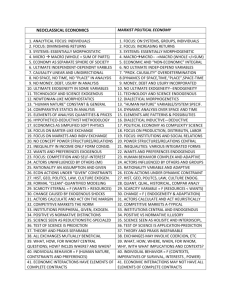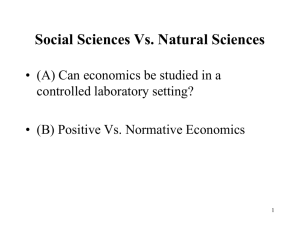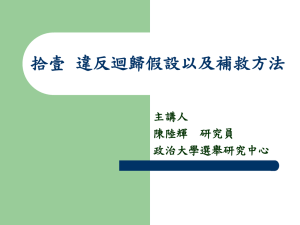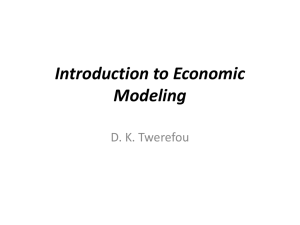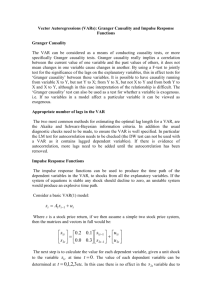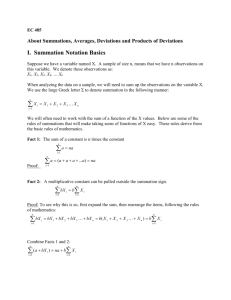Simultaneous Equations Models
advertisement
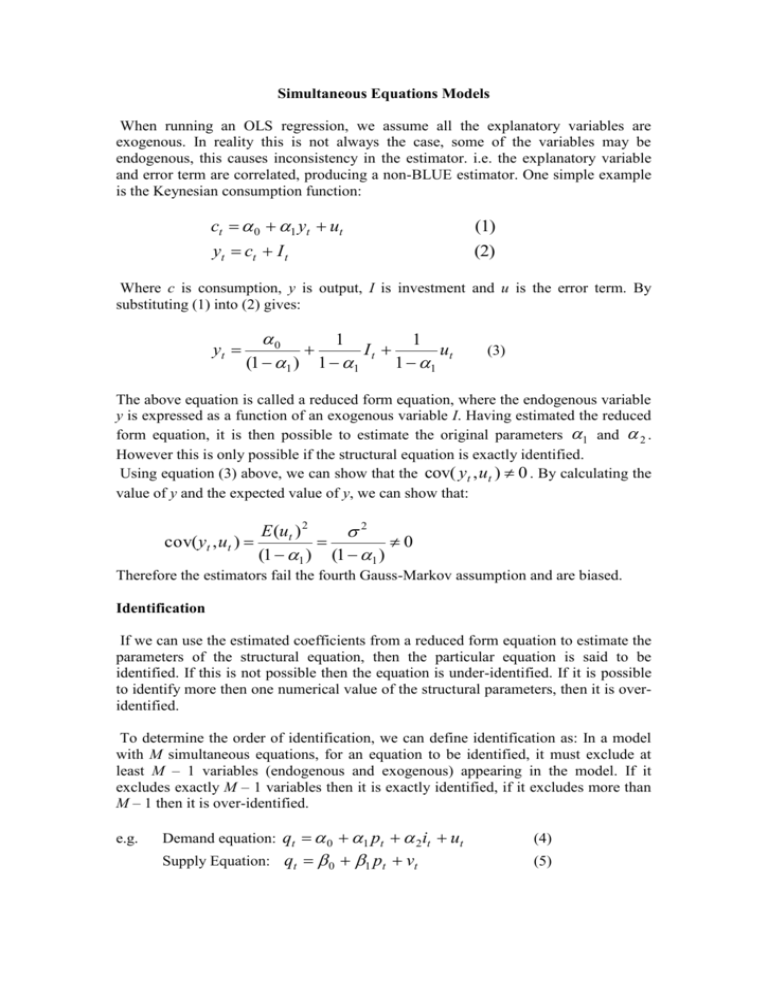
Simultaneous Equations Models When running an OLS regression, we assume all the explanatory variables are exogenous. In reality this is not always the case, some of the variables may be endogenous, this causes inconsistency in the estimator. i.e. the explanatory variable and error term are correlated, producing a non-BLUE estimator. One simple example is the Keynesian consumption function: ct 0 1 yt ut (1) yt ct I t (2) Where c is consumption, y is output, I is investment and u is the error term. By substituting (1) into (2) gives: yt 0 1 1 It ut (1 1 ) 1 1 1 1 (3) The above equation is called a reduced form equation, where the endogenous variable y is expressed as a function of an exogenous variable I. Having estimated the reduced form equation, it is then possible to estimate the original parameters 1 and 2 . However this is only possible if the structural equation is exactly identified. Using equation (3) above, we can show that the cov( yt , ut ) 0 . By calculating the value of y and the expected value of y, we can show that: cov( yt , ut ) E (ut ) 2 2 0 (1 1 ) (1 1 ) Therefore the estimators fail the fourth Gauss-Markov assumption and are biased. Identification If we can use the estimated coefficients from a reduced form equation to estimate the parameters of the structural equation, then the particular equation is said to be identified. If this is not possible then the equation is under-identified. If it is possible to identify more then one numerical value of the structural parameters, then it is overidentified. To determine the order of identification, we can define identification as: In a model with M simultaneous equations, for an equation to be identified, it must exclude at least M – 1 variables (endogenous and exogenous) appearing in the model. If it excludes exactly M – 1 variables then it is exactly identified, if it excludes more than M – 1 then it is over-identified. e.g. Demand equation: qt 0 1 pt 2it ut Supply Equation: qt 0 1 pt vt (4) (5) Where we assume I is exogenous and p and q are endogenous. The first equation is not identified (2-1=1), there are no variables excluded from this equation. The second equation is just identified (2-1=1), there is exactly one variable (I) excluded. Vector Autoregression (VAR) The VAR is often perceived as an alternative to the simultaneous equation method. It is a systems regression model in that there is more than one dependent variable. In the most basic bivariate example, where there are just two variables, then each of their current values will depend on combinations of the previous values of both variables and error terms. yt 0 1 xt 1 1 yt 1 ..... k xt k k yt k u t xt 0 1 xt 1 1 yt 1 ...... k xt k k yt k vt The number of lags included in the VAR depends on either the data (i.e. monthly data would require 12 lags) or minimizing the Akaike or Schwarz-Bayesian criteria ( maximising in some text books depending on how the criteria is set up). In addition it is assumed that the error term is not serially correlated. The system can be expanded to include any number of variables and is used extensively in the Finance literature. The VAR has various advantages over univariate time series models, for instance there is no need to specify which variables are exogenous and which endogenous, all variables are by definition endogenous. (However it is possible to specify a purely exogenous variable as a regressor, in this case there would be no equation in which it was a dependent variable). In addition the problem of model identification does not occur when using a VAR. Providing there are no contemporaneous terms acting as regressors, OLS can be used to estimate each equation individually, as all the regressors are lagged so therefore treated as pre-determined. In addition VARs are often highly efficient at forecasting compared to traditional models. However the VAR approach has some very important defects, it is viewed as atheoretical. As the model specification tends not to be driven by theory. It is also difficult to know the appropriate lag lengths to include in the VAR, different methods often suggest different numbers of lags. If large numbers of lags are included, many will often be insignificant and if there are a large number of equations in the VAR then a large number of degrees of freedom would be required. It is also difficult to interpret the coefficients and levels of significance, the lags are often tested for joint significance. In addition the number of lags for each equation will be the same, unless specific restrictions are applied to each equation. Finally should each component of the VAR be treated as stationary, first-differencing results in a loss of long-run information. A way around this problem is to use a Vector Error Correction Model (VECM).
